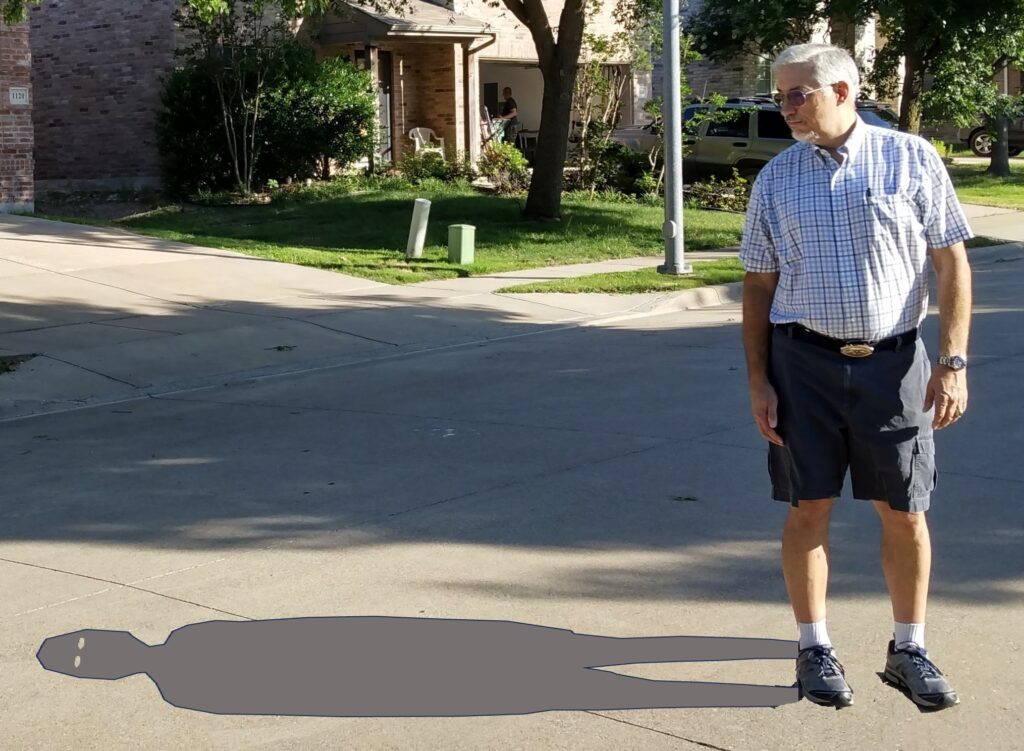If you’re a fiction writer wishing to create vivid characters, you’ll like Shadow Theory. But beware of its major pitfall.
In your first attempts to write stories, you’re likely to invent characters without much nuance. Perhaps they’ll resemble common tropes or stereotypes. Even if you avoid that, your characters may lack the sort of quirks readers enjoy. The characters may seem flat, two-dimensional. Shadow theory can help with that.

Definition
In this post, author K.M. Weiland provides an outstanding, in-depth description of shadow theory. Please read her post, since I’m providing only a brief overview here.
Imagine your character as an impressionable child. She tries to be outgoing in an effort to make friends, but gets snubbed. Reacting to this, she adopts a more standoffish approach and remains aloof from others. This practice protects her from rejection. She has relegated her friendliness to the shadows. Though still a part of her, that trait is something she tries to keep hidden from the world.
The theory says this happens to real people, like you and me. We seek workable coping strategies and push their opposites to the shadows. However, the shadow remains attached, still available. If stress or other harsh circumstances require a change, we can switch to the shadow’s method, though we will find it difficult to break a long-held pattern and leave our comfort zone.
Use in Fiction
You see the powerful potential of this theory in creating fascinating, relatable fictional characters. A strong defining trait coupled with the opposite trait lying in the background—often the subconscious background, even as a suppressed memory—gives a character more dimension.
As your plot inflicts increasing pressure on your character and she finds her accustomed responses failing again and again, you can bring the opposite trait out from the shadows to win the day. This shift to shadow behavior won’t be easy for the character, and that difficulty adds to the drama.
Misuse
As I read Weiland’s post, I loved learning about this literary tool, but saw a danger. A hammer is a fine tool as well, but it hurts when you smash your thumb with it by accident.
If you’re clumsy in the use of shadow theory, you could confuse readers. You shouldn’t show a character acting one way throughout the book, then have her suddenly change behavior without explanation.
If a character acts out-of-character, readers notice and can’t help questioning the author’s competence.
Solutions
You can overcome this problem in a variety of ways, including the following. You could:
- provide a flashback to show the shadow trait forming in the character’s past,
- show the character’s thoughts as she realizes the shadow trait exists (She may wonder where it came from, and may even recall its source in her past, but it should still require effort to use the shadow trait),
- show a second character (B)—perhaps an ally or love interest of A—who senses the shadow trait in A and helps A to see and use that trait, or
- give hints of the shadow throughout, so the reader sees it but the character doesn’t until the dramatic ending (this may be the most difficult of the four).
If you’re like me, you write descriptions of your major characters before creating the first draft. Consider answering the questions asked by Weiland in her post as you develop these descriptions. You might devise your plot such that circumstances test your character’s accustomed behaviors but those behaviors produce bad, then worse, setbacks. Only when the character, through internal struggle, calls upon the shadow trait, can that character prevail.
As the old radio drama tagline put it—Who knows what evil lurks in the hearts of men? The Shadow knows…and so does—
Poseidon’s Scribe
